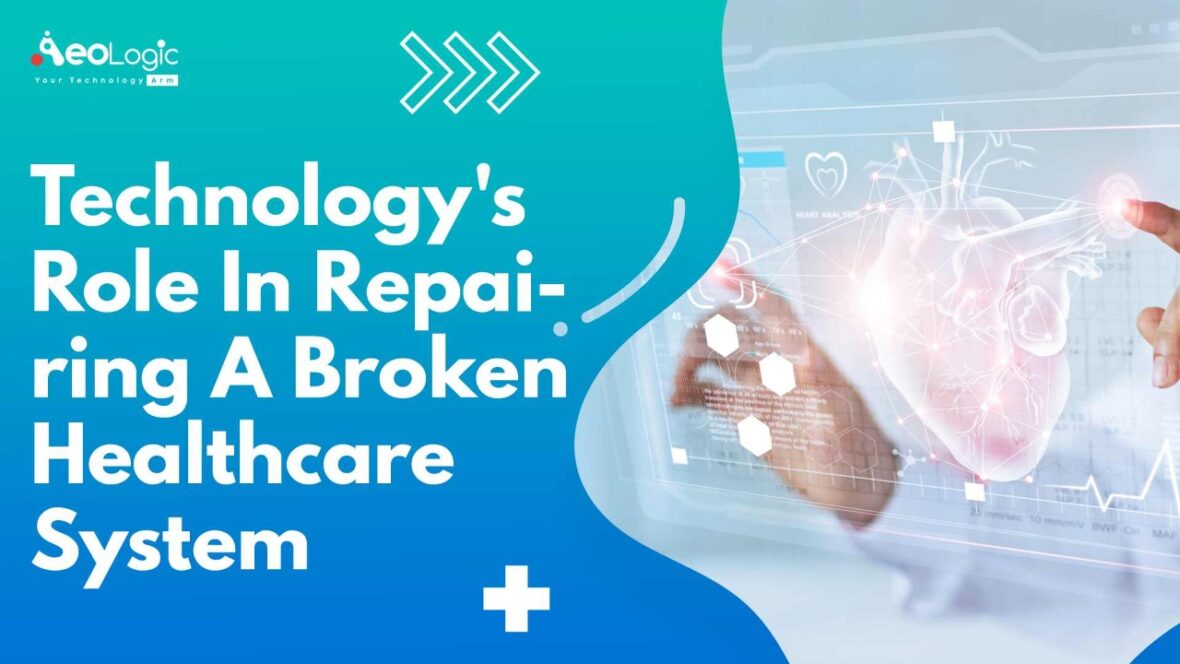Technology has a greater role than ever before in the healthcare system. Hospitals are now relying on smart technology to monitor patients, collect data, and diagnose diseases. Technology is more than just a tool to improve our lives. In many cases, it’s the only thing standing between us and death. And in some cases, it can save the day when all else has failed. I’m talking about technology such as defibrillators, pacemakers, or clunky old dialysis machines. Technology is steadily playing a more prominent role in our health care system, with doctors increasingly turning to telemedicine to diagnose patients. So in this blog, we will discuss technology’s role in repairing a broken healthcare system.
What is Technology’s Role in repairing a broken healthcare system?
Technology has always been an integral part of healthcare, from the early days of medical records being kept on paper to the current electronic health records system. With recent advances in technology, there has been an increase in the use of technology in all aspects of healthcare. From diagnosis and treatment to prevention and education, technology is playing a larger role in healthcare than ever before. So, what is technology’s role in repairing a broken healthcare system?
Technology can help to improve communication between providers and patients. In a broken healthcare system, there can be a lack of communication between different providers, which can lead to duplication of services and errors in care. By using a secure messaging system, providers can communicate with each other more easily and efficiently, which can help to improve the coordination of care.
Technology can also help to improve access to care. In a broken healthcare system, patients may have difficulty accessing care due to long wait times or lack of transportation. By using telemedicine, patients can receive care from their providers without having to leave their homes. This can help to increase access to care for those who might otherwise have difficulty getting the care they need.
Also Read: How Machine Learning Can Improve Supply Chain Efficiency
Levels of Technology’s Role in Repairing the Healthcare System
Technology has played a role in repairing the healthcare system in a few ways. One way is by providing access to information that can help decision-makers understand what is broken and where improvements need to be made. Another way is by developing new tools and applications that can make the delivery of care more efficient and effective. Additionally, technology can help connect patients with the resources they need to get the care they deserve.
Pros and Cons of Technology in Healthcare System

Technology has revolutionized the healthcare industry and has played a major role in repairing a broken healthcare system. However, technology also has its drawbacks. One of the biggest problems with technology is that it can be expensive to implement and maintain. Additionally, technology can sometimes create more problems than it solves. For example, electronic health records (EHRs) are intended to improve communication and coordination of care between providers, but they can also lead to errors and frustration when they don’t work properly.
Also Read: How Disruptive Technology is Impacting the Future of Retail
Some experts believe that technology is the key to fixing the many problems plaguing the healthcare industry. They argue that technology can help improve communication, coordination of care, and patient safety. Others are skeptical of this claim, arguing that technology is often expensive and that it can sometimes do more harm than good.
Examples and Consequences of Technology Across Society
Technological advances have completely changed the healthcare landscape in recent years. From wearable devices that track our fitness to apps that remind us to take our medication, technology has well and truly infiltrated healthcare. But what happens when things go wrong?
There are countless examples of technology failing in healthcare. In one high-profile case, experimental cancer treatment was found to be more harmful than helpful. In another, a patient died after a hospital failed to properly monitor his vital signs.
But it’s not all doom and gloom. When used correctly, technology can be a powerful tool in repairing a broken healthcare system. For example, telemedicine is playing a vital role in bringing care to rural areas. And 3D printing is being used to create custom implants and prosthetics. So while technology definitely has its fair share of problems, it also has the potential to be part of the solution.
Also Read: How Robotic Process Automation Can Contribute To Retail Growth
Conclusion
Technology is often lauded as the panacea for all of our ills, but can it really help to repair a broken healthcare system? The answer is a little more difficult. On the one hand, technology can help us to diagnose and treat patients more effectively. On the other hand, it can also create new problems and exacerbate existing ones. Ultimately, whether or not technology can help to repair our healthcare system depends on how we use it. If we use it thoughtfully and with care, it has the potential to make a real difference. Also if we use it recklessly or without consideration for its impact, however, it could make things worse.
If you want to learn more about healthcare technology, connect with Aeologic Technologies.







